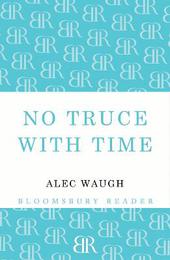
|
No Truce with Time
Paperback / softback
Main Details
| Title |
No Truce with Time
|
| Authors and Contributors |
By (author) Alec Waugh
|
| Physical Properties |
| Format:Paperback / softback | | Pages:266 | | Dimensions(mm): Height 234,Width 153 |
|
| Category/Genre | Modern and contemporary fiction (post c 1945) |
|---|
| ISBN/Barcode |
9781448201136
|
| Classifications | Dewey:823.91 |
|---|
| Audience | |
|---|
|
Publishing Details |
| Publisher |
Bloomsbury Publishing PLC
|
| Imprint |
Bloomsbury Reader
|
| Publication Date |
14 August 2012 |
| Publication Country |
United Kingdom
|
Description
Having married a man several years older than herself, Mary Montague craves love and attention to relieve the monotony of her days. Her husband, Gerald Montague, whose ill-running health is ruining his life, has little time to spare for his young wife. In Mary's lonely eyes, Barclaye Ashe is the most romantic thing happening. He fulfills Mary's need for love and it isn't long before Mary, in spite of herself, returns his love and embarks on idyllic days and balmy nights; exquisite moments of perfect ecstasy for Mary who thinks her happiness is complete. However, Mary's happy bubble is in danger of bursting when Jimmy Bruce and his daughter Kitty arrive on the island, forcing Mary to learn that time never stands still and all things must move relentlessly... Alec Waugh again brings all his powers as a novelist to unravel a densely emotional human situation.
Author Biography
Alec Waugh, 1898-1981, was a British novelist born in London and educated at Sherborne Public School, Dorset. Waugh's first novel, The Loom of Youth (1917), is a semi-autobiographical account of public school life that caused some controversy at the time and led to his expulsion. Waugh was the only boy ever to be expelled from The Old Shirburnian Society. Despite setting this record, Waugh went on to become the successful author of over 50 works, and lived in many exotic places throughout his life which later became the settings for some of his texts. He was also a noted wine connoisseur and campaigned to make the 'cocktail party' a regular feature of 1920s social life.
|